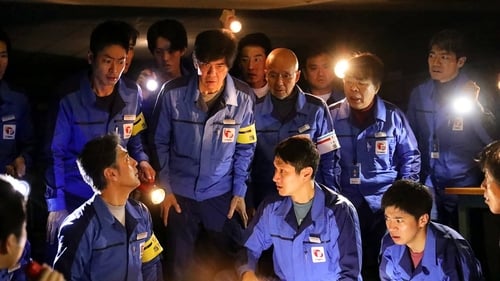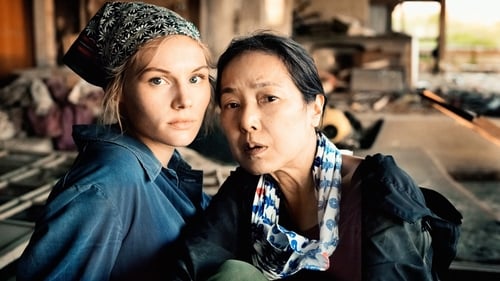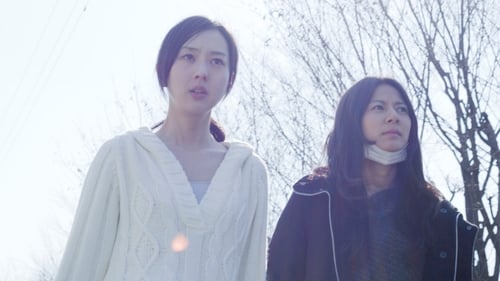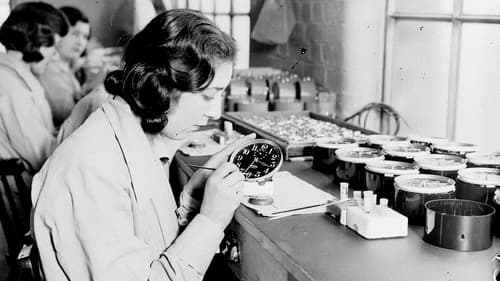311 (2012)
장르 : 다큐멘터리
상영시간 : 1시간 34분
연출 : Tatsuya Mori, Takeharu Watai, Yoju Matsubayashi
시놉시스
Two weeks after the earthquake, writer and movie director Tatsuya Mori, journalist Takeharu Watai, movie director Yojyu Matsubayashi, and movie producer Takuji Yasuoka, headed for the disaster stricken area, not thinking this film would become a production. "Only to confirm the situation" was their common objective.

2011년 3월 11일 오후 2시 46분, 동일본 대지진이 발생한다. 후쿠시마 원자력 발전소 제1발전소는 위험한 상황에 빠진다. 원전 안에 남아, 사고를 수습한 후쿠시마 출신의 작업원들은 해외 언론 매체들에 의해 '후쿠시마의 50인(Fukushima 50)'이라고 불렸다. 그 안에서 과연 무슨 일이 일어나고 있었던 것일까? 진실은 무엇일까? 동일본 궤멸이라는 위기가 다가오는 와중에도 고뇌에 찬 결단을 내려야 했던 그들은 과연 무슨 생각을 하고 있었을까?

세계적으로 주목 받은 아티스트이자, <마지막 황제>(1987) 오리지널 사운드트랙 작업으로 아카데미, 골든글로브, 그래미를 석권한 작곡가 류이치 사카모토는 인후암 판정 이후 모든 활동을 중단한다. 하지만 평소 존경하던 이냐리투 감독으로부터 작업의 의뢰를 받게 되면서 다시 작업을 시작하게 된 류이치 사카모토는 치료로 중단했던 새 앨범을 다시금 준비하기 시작한다.

젊은 독일 여성 마리는 자신의 삶을 변화시키기 위해 후쿠시 마로 도망치듯 떠나온다. 클라운즈 포 헬프(Clowns4Help) 라는 단체와 함께 일하며 2011년 후쿠시마 원전사고의 생존 자들에게 기쁨을 전해줄 수 있길 바란 것이다. 마리는 오래 지나지 않아, 자신이 그 비극에서 고달픔을 덜어내는 임무에 전혀 적합하지 않다는 것을 깨닫게 된다. 하지만 마리는 거 기서 도망치기보다 성미가 고약한 사토미라는 이름의 노인 과 함께 지내기로 결정한다.
(2016년 제18회 서울국제여성영화제)

Three decades after the nuclear explosion, almost everything has been said about this ecological and sanitary disaster that made Pripiat a part of History. How did the greatest industrial disaster change the course of History, disrupt global geopolitics and, directly or indirectly, redistribute the balances and power relations of the twentieth century? The world will never be the same again. By retracing the incredible battle waged by the Soviet Union against radiation, this film proposes to retrace and enlighten an extraordinary story, while exploring the historical stakes in the medium and long-term…

A powerful documentary that sheds some light on what really happened at the Fukushima nuclear power plant after the 2011 earthquake and the tsunami that immediately followed. A powerful documentary - shot from March 11th, 2011 through March 2015 - that sheds some light on what really happened at the Fukushima nuclear power plant after the 2011 earthquake and the tsunami that followed.

In the aftermath of the Fukushima nuclear disaster, a Japanese farmer ekes out a solitary existence within the radiation red zone.

Since 1950, there have been 32 nuclear weapon accidents, known as "Broken Arrows." A Broken Arrow is defined as an unexpected event involving nuclear weapons that result in the accidental launching, firing, detonating, theft or loss of the weapon. To date, six nuclear weapons have been lost and never recovered.Now, recently declassified documents reveal the history and secrecy surrounding the events known as "Broken Arrows". There have been 32 nuclear weapon accidents since 1950. Six of these nuclear weapons have been lost and never recovered. What does this say about our defense system? What does this mean to our threatened environment? What do we do to rectify these monumental "mistakes"? Using spectacular special effects, newly uncovered and recently declassified footage, filmmaker Peter Kuran explores the accidents, incidents and exercises in the secret world of nuclear weapons.

Fukushima's Minami-soma has a ten-centuries-long tradition of holding the Soma Nomaoi ("chasing wild horses") festival to celebrate the horse's great contribution to human society. Following the meltdown of the Fukushima Daiichi Nuclear Power Plant in the wake of the March 11, 2011 earthquake and tsunami, local people were forced to flee the area. Rancher Shinichiro Tanaka returned to find his horses dead or starving, and refused to obey the government's orders to kill them. While many racehorses are slaughtered for horsemeat, his horses had been subjected to radiation and were inedible. Yoju Matsubayashi, whose "Fukushima: Memories of the Lost Landscape" is one of the most impressive documentaries made immediately after the disaster, spent the summer of 2011 helping Tanaka take care of his horses. In documenting their rehabilitation, he has produced a profound meditation on these animals who live as testaments to the tragic bargain human society made with nuclear power.

We return to Fukushima five years after the nuclear disaster caused by a tsunami. What issues does the clean up operation face? What progress has been made in dealing with this major disaster, especially in the detection and removal of melted nuclear fuel?

The referendum whether nuclear power plants should be banned has been held in Japan. People must decide their future.

Every nuclear weapon made, every watt of electricity produced from a nuclear power plant leaves a trail of nuclear waste that will last for the next four hundred generations. We face the problem of how to warn the far distant future of the nuclear waste we have buried --but how to do it? How to imagine the far-distant threats to the sites, what kinds of monuments can be built, could stories or legends safeguard our descendants? Filmed at the only American nuclear burial ground, at a nuclear weapons complex and in Fukushima, the film grapples with the ways people are dealing with the present problem and imagining the future. Part observational essay, part graphic novel, this documentary explores the idea that over millennia, nothing stays put.

More than four years after the Fukushima Dai-Ichi disaster, the invisible radioactivity is still omnipresent, but gradually vanishing from the locals 's mind.

Eiko Kanno is a 79 year old grandmother whose life has been completely changed by the nuclear disaster in Fukushima. Her life should have been with her grandchildren but because of the disaster which caused her entire village of Iitate to be evacuated. She now lives by herself in temporary housing. Yoshiko Kanno and her extended family are very important to her changed life. Yoshiko Kanno lost her parents in the evacuation and she found herself living next door to Eiko Kanno. They entertain themselves by telling jokes to each other like a comedic duo. They now live together.

3.11 대지진이 평범한 일본인의 정신과 일상에 어떤 영향을 미쳤는지 알리는 작품. 도쿄의 자그마한 아파트. 이웃해 살고 있는 사에코와 유카코는 대지진 이후 모든 것이 불안하다. 남편에게 이혼을 요구받은 사에코는 딸이 방사능에 노출될까 걱정하고, 유카코 역시 방사능의 두려움 때문에 남편과 이사를 가자고 조른다.

After the 11 March 2011 tsunami and nuclear disaster, residents of Futaba, a town in Fukushima Prefecture, are relocated to an abandoned high school in a suburb of Tokyo, 150 miles south. With a clear and compassionate eye, filmmaker Atsushi Funahashi follows the displaced people as they struggle to adapt to their new environment. Among the vivid personalities who emerge are the town mayor, a Moses without a Promised Land; and a farmer who would rather defy the government than abandon his cows to certain starvation.

Chernobyl 1986. A nuclear reactor exploded, spewing out massive quantities of radiation into the atmosphere. Within days, the pollution had spread across Europe. Living on land contaminated with radioactivity would be a life-changing ordeal for the people of Belarus, but also for the Sami reindeer herders of central Norway. It even affected the Gaels of the distant Hebrides. Five years ago there was a meltdown at the Fukushima reactor, and thousands of Japanese people found their homes, fields and farms irradiated, just as had happened in Europe. This international documentary, filmed in Belarus, Japan, the lands of Norway's Sami reindeer herders and in the Outer Hebrides, poses the question: what lessons have we learned?

2011년 3월 11일. 동일본 대지진이 일어난 후 정치부 기자인 나베시마는 지진과 정부의 대처를 취재하던 중, 무언가 심상찮은 일이 일어나고 있음을 눈치챈다. 어렵사리 얻어낸 정보는, 지진으로 후쿠시마 원전 냉각장치가 멈추었다는 것! 그러나 정보는 제한되어 있고 정부의 대처는 답답하기만 하다. 직접 도비(東日)전력 원자력부에 몸담았던 요코하마씨를 찾아내 취재하는 나베시마. 그러나 그가 말해주는 진실들은 더욱 놀라운데…

The exciting story of the splitting of the atom, a scientific breakthrough of incalculable importance that ushered in the nuclear age, has a dark side: the many events in which people were exposed to radiation, both intentionally and by accident.

The Japanese population’s reaction to the catastrophe of March 2011 has been described as “stoic” by the Western media. The Japanese code of conduct is indeed deeply rooted in their Buddhist traditions, and young filmmakers Tim Graf and Jakob Montrasio observe in detail what this means for the people and their religion. At graveyards, in temples, at monasteries and with families, they question the impact this triple affliction has had on the lives and beliefs of the inhabitants. How deeply do their beliefs affect their grieving? What role do the monks play in assisting people with their grief? And, what effects has this enormous catastrophe had on their religious rituals? SOULS OF ZEN inserts the events of March 2011 into the context of traditional Zen Buddhism, examining Japan’s religiousness and the beliefs of those practising it at a crucial turning point.












